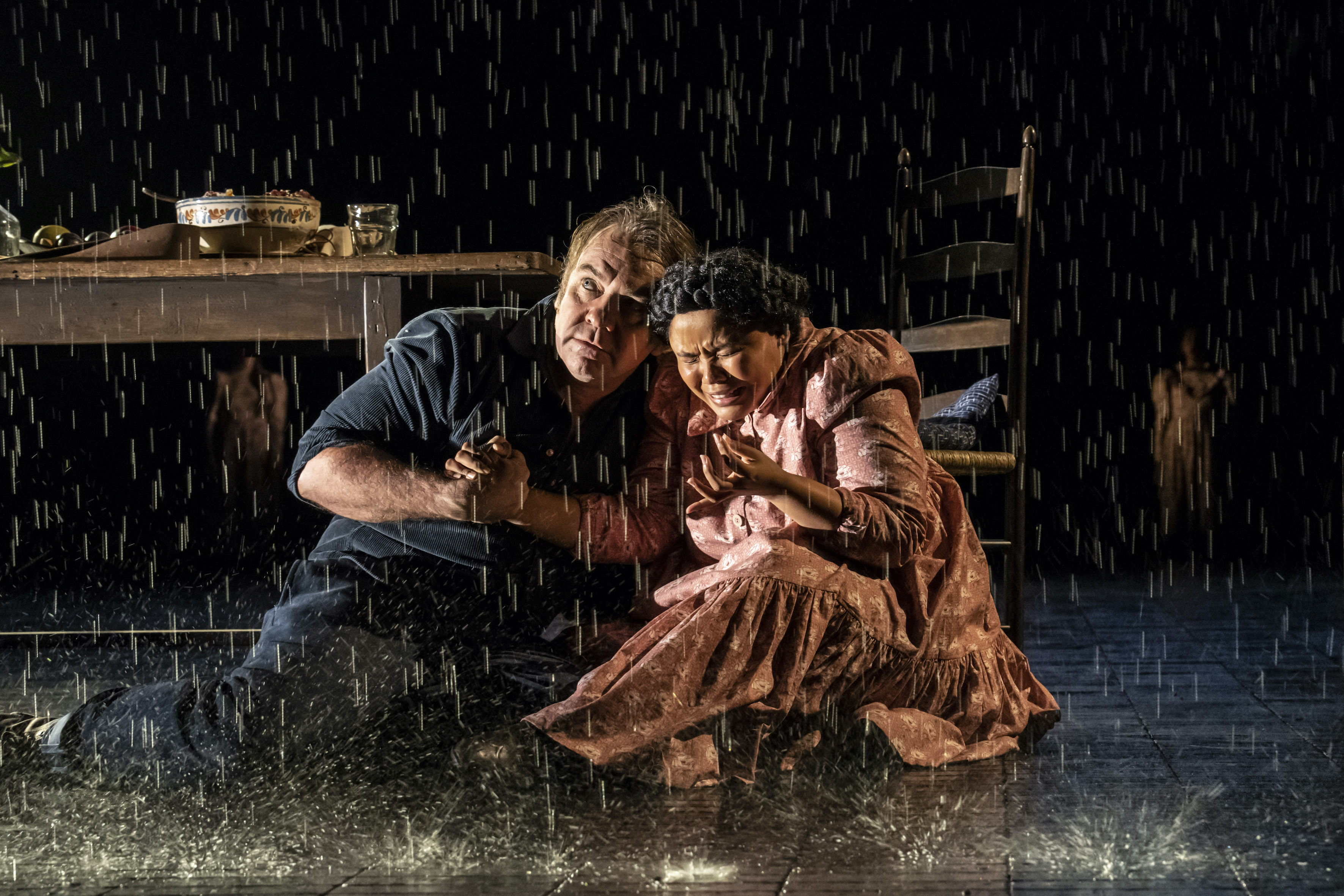How can this beauty arise from such ugliness? The Crucible, Arthur Miller’s 1953 drama about the Salem witch trials of 1692, is rife with unwavering prejudices, selfish slander, and sickening motives. But under Lyndsey Turner’s aesthetically vigorous direction on the National Theatre’s Olivier stage, the play’s infected air becomes a breeding ground for visually arresting tableaux possessed of rampant emotional intensity. Painterly but unfussy, Turner’s staging fixes our gaze on those electric moments in Miller’s allegorical tale where unreason and blind faith lock horns with integrity.
Nearly 70 years after on, The Crucible remains an object lesson in the perils of groupthink and mass hysteria, its tragedy buttressed by merciless intersections of the personal and the political. When the 17-year-old Abigail Williams (a darkly blushing Erin Doherty) incites a group of young girls in Salem to accuse their neighbours of witchcraft, the whole town finds itself sucked into a vortex of unfounded indictments and imminent executions. As John Proctor (Brendan Cowell – Abigail’s one-time lover – strives to extricate himself and his wife from the machinations closing in around them, trials without lawyers and testimonies without evidence paint them into a corner.
But such “painting” is also done by Turner herself, who marshals an impressive array of stage compositions – ranging from the warmly domestic to the blood-chillinglya austere – to animate the play’s hell-bound trajectory. Es Devlin’s deceptively simple set, dominated by a ceiling-like, rain-spouting platform, utilises the depth of the Olivier to marvellous effect: while much of the action unfolds downstage centre, the upper reaches occasionally host haunting enactments of otherwise narrated material. Tim Lutkin’s intricate lighting is indispensable to the emotional texture, as is Tingying Dong and Paul Arditti’s sound design, which underscores the mounting tension.
 An assured cast of over 25 navigates the play’s thorny woods with great ease. Doherty’s Abigail is legibly unhinged from the get-go; whenever put under pressure, she remains quick to seize the upper hand. Her frenzied, breathless asperity hints at a young woman whose destructive impulse is bound to turn inward too. As Proctor, a plodding (at the start) Cowell (pictured above with Rachelle Diedericks as Mary Warren) organically shifts gears as his character comes under greater attack. By the end, it is genuinely distressing to see the shell of himself that he has become.
An assured cast of over 25 navigates the play’s thorny woods with great ease. Doherty’s Abigail is legibly unhinged from the get-go; whenever put under pressure, she remains quick to seize the upper hand. Her frenzied, breathless asperity hints at a young woman whose destructive impulse is bound to turn inward too. As Proctor, a plodding (at the start) Cowell (pictured above with Rachelle Diedericks as Mary Warren) organically shifts gears as his character comes under greater attack. By the end, it is genuinely distressing to see the shell of himself that he has become.
Among the supporting performances, Fisayo Akinade is admirably articulate as Reverend Hale, whose increasing doubts about the legal proceedings are deftly conveyed. Diedericks is excellent as the complicit Mary who ends up coming clean, even as she continues to experience crippling doubt. John Proctor’s wife Elizabeth comes fiercely alive in Eileen Walsh’s nimbly modulated performance: a single look communicates a thrilling mixture of conflicting feelings. Matthew Marsh’s Deputy Governor Danforth and Karl Johnson’s Giles Corey further impress, as well.
Turner’s production sets great store by its exceptional ability to capture – and nurture – moments of remarkable tension, so much so that, at times, the physicality of the life on stage seems to come to a standstill, as if arrested by the concurrent interplay of looks, gestures, and words. On occasion, this emphasis on the particulars gives way to a faltering of the overall tempo, which is perhaps exacerbated by the play’s own verbosity and its slightly drawn-out length. Likewise, Turner’s decision to frame her staging with passages from Miller’s prologue and epilogue – delivered by the ensemble of girls, all clad in doll-like pinks – feels at odds with the enclosed intimacy elsewhere.
Even if this American classic doesn't here receive a particularly daring or novel interpretation, there is no denying its enduring relevance and power. In serving Miller’s text with discipline and care, Turner's staging is both sturdy and elegant, allowing contrary impulses to clash with shattering results.















Add comment